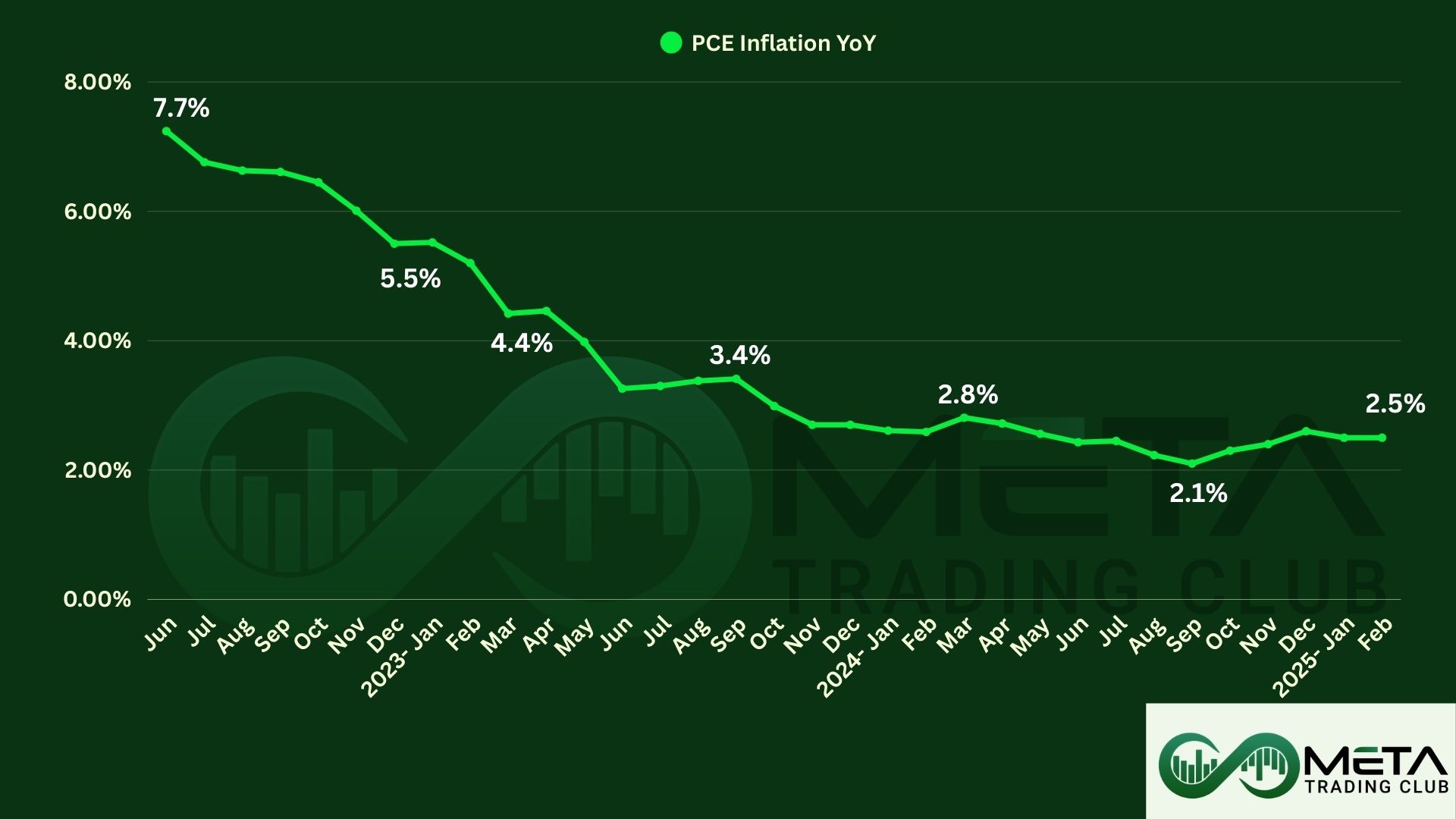The first day of the week was relatively calm for the financial markets. Markets are mostly awaiting US inflation data.
US indices remained indecisive, and in the forex market, GBP and EUR were the strongest currencies against JPY and CHF, respectively. The dollar index reached around 105.30 and has yet to initiate any specific movement for the medium term.
Oil continued to fluctuate between support and resistance levels of 77.42 and 79.78, while gold underwent a corrective movement towards the $2343 range. Bitcoin, after hitting a static resistance, has retraced for now, adopting a downward momentum.
Economic Events:
The US dollar edged slightly higher against most major currencies on Friday, but began the new week cautiously as traders hesitated to take significant positions ahead of Wednesday’s CPI inflation data.
Following a Federal Reserve decision that was less hawkish than anticipated and a softer-than-expected US employment report for April, investors reintroduced the possibility of rate cuts into the equation, adding several basis points to the table.
However, comments from a few Fed officials and an increase in the University of Michigan’s consumer inflation expectations on Friday led investors to slightly reduce their bets on Fed rate cuts. Fed funds futures now suggest approximately 42 basis points of rate reductions by year-end, with a 75% probability of the first quarter-point cut occurring in September.
While Minneapolis Fed President Neel Kashkari and Dallas Fed President Lorie Logan, who are not voting members this year, suggested that monetary policy may not be sufficiently loose, Atlanta Fed President Raphael Bostic, a voting member, expressed the view that only one quarter-point reduction is likely this year, hinting at a potentially more restrained approach by the Fed.
The focus now shifts to the Producer Price Index (PPI) and Consumer Price Index (CPI) data on Tuesday and Wednesday, respectively, which will indicate whether inflation remained steady in April or resumed its downward trend. If inflation shows no signs of cooling, it may convince investors that two quarter-point cuts are excessive for the year, leading them to adjust their expectations upward. This could further bolster the US dollar and Treasury yields.

Source: Dailyfx
Gold (XAUUSD):
Gold experienced a decline in the first half of Monday’s session, likely due to profit-taking following its 2.5% increase last week, which ended a two-week losing streak. However, the overall trend remains bullish, with the metal potentially heading for its third consecutive month of gains.
Last week, gold showed strength before retreating slightly at the beginning of this week. It received substantial support following the release of weaker-than-expected April non-farm payrolls report. Additionally, gold found further support later in the week as the dollar weakened in response to the latest jobless claims data, indicating a cooling US labor market and reinforcing expectations of a rate cut by the Federal Reserve, possibly by September.
Therefore, recent gains in gold prices partly reflect a weaker dollar and increased likelihood of a Fed rate cut. This week, the US dollar will face significant scrutiny as we await key data releases.
S&P500:
Stocks traded mostly flat yesterday as investors prepared for a busy week of economic data. The upcoming release of the PPI report, followed by the CPI report on Wednesday and retail sales on Thursday, has set the stage for heightened market activity. Additionally, Jay Powell’s speech later today adds to the anticipation.
One notable observation today is that implied volatility levels appear relatively low compared to previous CPI reports. The VIX 1-day currently sits at around 11.80, up 3.5 points from Friday. However, during the last CPI report, the VIX 1-day surged to approximately 19, and even in February, it reached around 14. Therefore, it wouldn’t be surprising to see it closer to 18 or 19 by the end of tomorrow.
This suggests that we may witness significant intraday market movements as implied volatility increases and traders implement hedging strategies. For instance, on April 9, rapid movement in the VIX 1 Day in the morning led to a sharp drop in the S&P 500. The volatility reset following the CPI report could result in moments or even days where the market appears indifferent.
Predicting the market’s response to the CPI report is challenging. However, one trend seems apparent: the higher the implied volatility leading into the event, the more likely it is that the S&P 500 will rally afterward. Therefore, it’s not that the market is apathetic; rather, mechanical forces are at play. Increasing implied volatility signals heightened market sensitivity to the news.
Foreign Exchange Market (FOREX):
While both the ECB and the Fed have opted to maintain steady interest rates, a notable contrast persists in their respective communications.
Recent remarks from Federal Reserve board members Kashkari, Bowman, and Logan indicate a growing influence of the hawkish faction within the Fed. This suggests a departure from earlier speculation regarding an imminent interest rate cut prompted by concerns of a significant economic slowdown.
In contrast, a more dovish stance is emerging from European Central Bank officials, fueling expectations of a potential interest rate cut as soon as June. This sentiment is reinforced by board member Frank Elderson’s assertive statement, pointing to June as a highly likely timeframe for an ECB policy shift.
If this scenario unfolds, it would mark a rare instance where the Fed lags behind the ECB in policy adjustments, potentially impacting the long-term trajectory of the EUR/USD currency pair.
Bitcoin (BTC):
The largest US-based cryptocurrency exchange has informed its customers about a system-wide outage but assured them that all funds are secure.
Coinbase’s status page highlighted the issue a few hours ago, indicating that the team is investigating. Updates have been provided, stating that they are continuing to address the problem.
Shortly after these outage warnings, users reported “degraded transactions,” causing failures when sending crypto or withdrawing fiat currencies. However, Coinbase reiterated that all funds are safe.
Interestingly, Bitcoin’s price reacted immediately to the news, dropping by almost a thousand dollars. While it’s uncertain if these events are directly related, it’s reasonable to assume that issues with a major US crypto exchange can influence Bitcoin’s price movements.
US Crude Oil WTI :
The Energy Information Administration’s report indicating a 4.0% decrease in gasoline demand compared to last year reflects consumer stress stemming from government inflationary policies. While warmer weather may lead to increased demand, the current environment suggests heightened economic strain.
Despite these challenges, the oil market is attempting to stabilize, anticipating a tight global market ahead. Demand for oil remains near record highs, although there are signs of sluggishness in the United States.
Globally, the balance between oil supply and demand for gasoline and diesel remains extremely tight. While geopolitical tensions persist, recent oil price adjustments have incorporated war premiums without major disruptions. However, the ongoing supply tightness is likely to increase pressure on the Biden administration, especially amidst declining approval ratings in various polls.
Disclaimer: The views and opinions expressed in the blog posts on this website are those of the respective authors and do not necessarily reflect the official policy or position of Meta Trading Club Inc. The content provided in these blog posts is for informational purposes only and should not be considered as financial advice. Readers are encouraged to conduct their own research and consult with a qualified financial advisor before making any investment decisions. Meta Trading Club Inc shall not be held liable for any losses or damages arising from the use of information presented in the blog posts.













